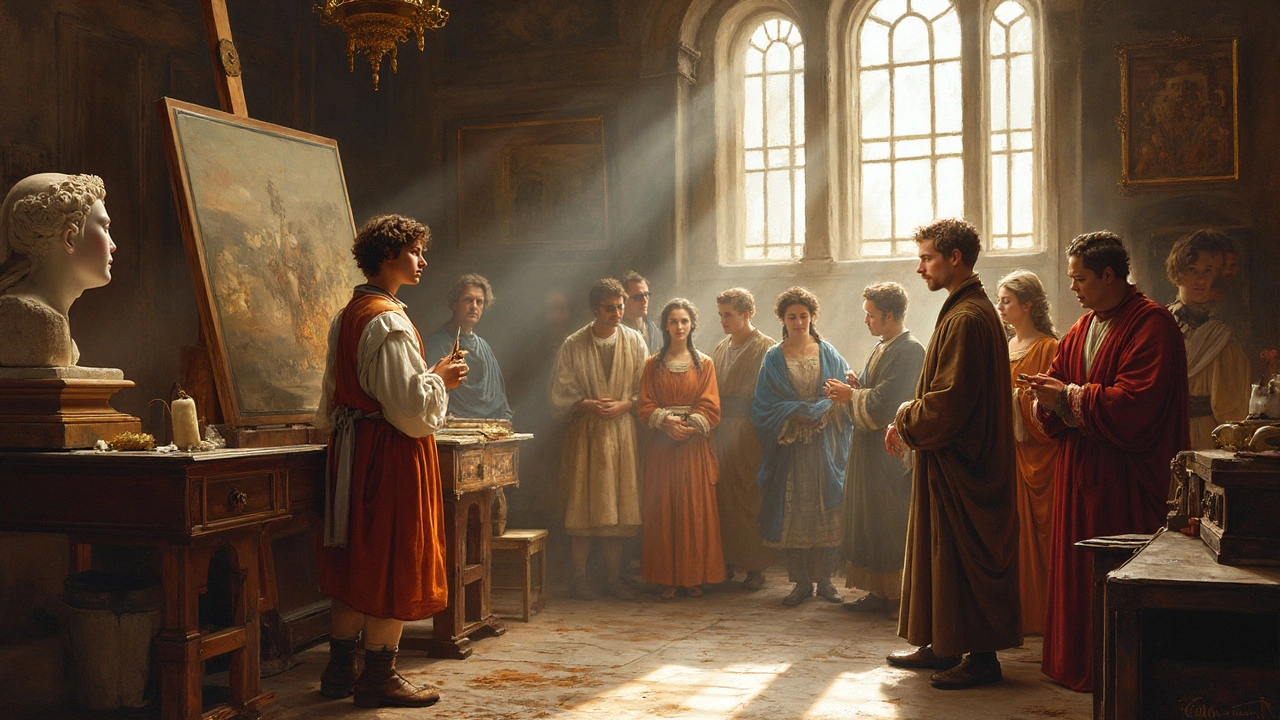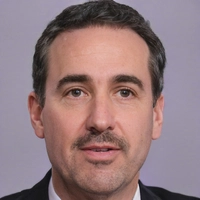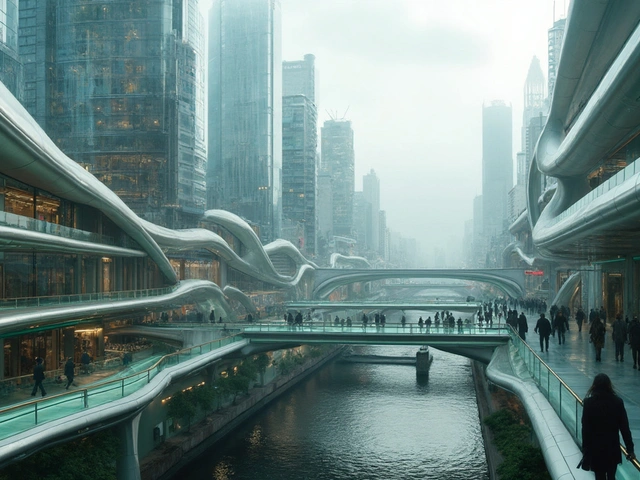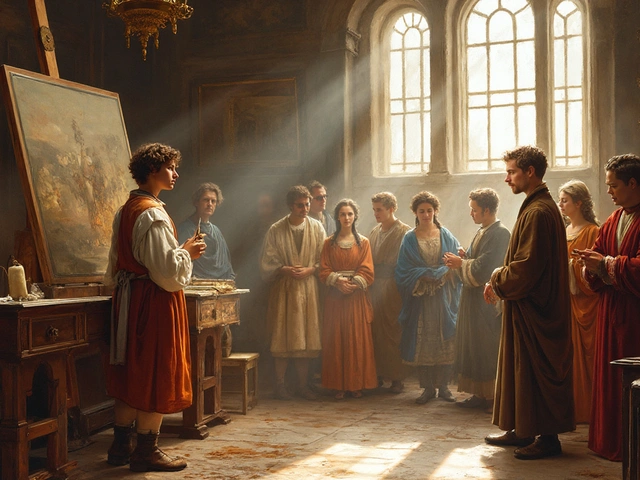Ever wonder why we know artists like Leonardo da Vinci or Michelangelo by name, but not the folks who painted church walls a hundred years before them? The Renaissance totally changed how people thought about art and artists. Suddenly, creativity and personal style weren’t just nice extras—they became the main thing. For the first time, artists started signing their work, putting themselves out there as unique creators, not just anonymous craftsmen sticking to the rules.
This shift turned the art world upside down. A painting or sculpture wasn’t just decoration anymore—it showed off the artist’s skill, ideas, even their attitude about life and the world. Want to see how this still matters? When you walk into a gallery or scroll through Instagram, notice how the artist’s identity and voice take center stage. That habit started in the streets and studios of Renaissance Italy.
- Breaking Away from Tradition
- The Rise of Individual Mastery
- Patrons and Fame: Artists as Celebrities
- Tools and Tricks: Innovation in Art
- Humanism and Self-Expression
- How the Renaissance Artist Changed the World
Breaking Away from Tradition
Imagine growing up in a world where every piece of art looked almost the same—stiff, flat, and mostly about religious stories. That’s what it was like in Europe before the Renaissance. Painters and sculptors followed strict templates set by the church or their guilds. Artists didn’t have much freedom to show their own ideas or even try to make things look real. Their names often didn’t matter, and their work wasn’t seen as much different from carpentry or bricklaying.
The Renaissance, kicking off in the 1400s, was like someone flipping the lights on. Artists started experimenting big time, ditching old rules. They looked at the way light hits faces, studied how bodies move, and tried to show real emotions instead of one-size-fits-all poses. For the first time, they used tricks like linear perspective—a way to draw that makes two-dimensional art look three-dimensional. This made things pop off walls instead of looking like cardboard cutouts.
Here’s a quick rundown of what changed:
- Artists signed their work, making sure people knew who made it.
- They started painting portraits of real people, not just saints.
- Perspective and anatomy got a major upgrade—think of Da Vinci’s super-detailed studies of bodies.
- Artists borrowed from science and math to make their art more lifelike and accurate.
| Before Renaissance | After Renaissance |
|---|---|
| Mainly religious art, anonymous | Art covered real people and places, artist recognized |
| Flat, symbolic images | Depth, perspective, and natural scenes |
| Strict guild traditions | Personal style and experimentation |
The numbers back this up too. According to art historians, less than 10% of pre-Renaissance artworks are signed, while over half of major Renaissance paintings carry the artist’s name. The urge to break free from old restraints and do your own thing? That starts here, setting the stage for everything that came after—in art, music, pretty much any kind of creative work today.
The Rise of Individual Mastery
During the Renaissance, being an artist stopped being just a job—it became something personal. Artists like Leonardo da Vinci and Raphael started thinking about how they could do things differently, with their own unique style. If you wanted to stand out, you needed more than steady hands. You needed raw talent, ideas, and the guts to break the mold.
Before this era, most artwork had no signature. But once artists realized their work could open doors to fame or Fortune, they began signing their paintings. This little change set the stage for artists to get recognition for their own style and ideas. Michelangelo’s chiseling on the ‘Pietà’ is a legendary moment—he actually sneaked into St. Peter’s Basilica just to carve his name on the sculpture because he wanted the world to know who made it.
What really shot these artists into the spotlight was competition. Cities like Florence, Venice, and Rome were packed with wealthy families wanting the best paintings in their homes or churches. Getting picked for a big commission meant everything—it was like winning an Oscar. Here’s something cool: when Leonardo created “The Last Supper,” it wasn’t just about looking good. He experimented with a new paint technique. It was risky and didn't age well, but it shows how Renaissance artists weren’t afraid to gamble for greatness.
“During the Renaissance, the status of the artist improved dramatically; for the first time, artists regarded themselves—and were celebrated by others—as creative individuals.” — The Metropolitan Museum of Art
Nobody wanted to just paint the same thing in the same way. That push to improve, to show off what made you special, is what really sparked the Renaissance art boom. Here are a few Renaissance heavyweights and what they’re famous for:
- Leonardo da Vinci: Jack of all trades—known for the Mona Lisa and wild sketches of inventions.
- Michelangelo: Carved the David statue and painted the Sistine Chapel ceiling while lying on his back.
- Raphael: Painted the “School of Athens” and became a superstar at the Vatican.
If you’re curious about just how impactful these artists were, check out some numbers:
| Artist | Most Famous Work | Years Active | Major Patron |
|---|---|---|---|
| Leonardo da Vinci | Mona Lisa | 1472–1519 | Ludovico Sforza |
| Michelangelo | David | 1490–1564 | Lorenzo de' Medici |
| Raphael | School of Athens | 1500–1520 | Pope Julius II |
This whole vibe—where artists became known for their creativity and not just their skills—still drives the art world today. If you want to leave your own mark, study these guys. They went all-in on their ideas and never settled for being average.
Patrons and Fame: Artists as Celebrities
If you've ever seen a modern artist partner with a big brand or get famous overnight, the same kind of thing started way back in the Renaissance. People with power and money—think the Medici family in Florence or Popes in Rome—basically became the first big-name art backers. These patrons hired artists not just to decorate their homes and churches, but to boost their own status too. So, if an artist painted something amazing, both the artist and the patron made a name for themselves.
The demand was wild. Artists could finally make a real living and, for once, pursue their own creative goals. Botticelli’s "Birth of Venus" wasn’t just a random commission; the Medici wanted art that would make them look cultured and modern. Michelangelo even got called to Rome by Pope Julius II to paint the Sistine Chapel, which was basically the biggest gig you could land back then.
This new setup turned artists into early celebrities. They got credit for their individuality and style, which helped their reputations skyrocket. Leonardo da Vinci’s fame grew thanks to patrons who bragged about "owning" his art. Word-of-mouth mattered: if a Medici or a Pope hired you, everyone soon knew your name.
- Patrons provided financial security, letting artists experiment.
- Artists started negotiating higher payments and asking for more creative input.
- Famous names helped attract even more patrons.
- This started the idea that top artists deserve top dollar.
Check out this quick breakdown showing how patronage pumped up artist fame:
| Artist | Patron | Famous Work | Impact |
|---|---|---|---|
| Leonardo da Vinci | Ludovico Sforza | The Last Supper | Put Leonardo at the center of Milan’s art scene |
| Michelangelo | Pope Julius II | Sistine Chapel Ceiling | Turned him into a superstar across Italy |
| Botticelli | Medici Family | Birth of Venus | Connected art to modern ideas and power |
Thanks to these relationships, Renaissance artists weren’t just workers—they were trendsetters and icons. Want the biggest tip from this era? When talent meets the right backer, everyone wins—and that’s how fame multiplies fast.

Tools and Tricks: Innovation in Art
If you look at art before the Renaissance, you'll notice it feels kinda flat. That's because perspective—the trick that makes things look 3D on a flat surface—wasn't really nailed yet. During the Renaissance, artists started using linear perspective. Filippo Brunelleschi, who was actually an architect, kicked this off with some clever geometry. Suddenly, paintings had depth, and viewers felt like they could step right into the scene.
Oil paint was another game changer. Before, most folks used egg tempera, which dried super fast and was tough to blend. Along came oil paints, and suddenly artists like Jan van Eyck in the North were layering colors, getting crazy-real textures and shadows. This didn’t just make paintings prettier—it let artists experiment without the stress of paint drying in seconds.
Another huge trick: using light and shade, or “chiaroscuro.” Leonardo da Vinci loved this. He’d add gentle shadows and highlights that made faces and objects look round, not like cardboard cutouts. It made things pop and feel real, and you can still see this trick in action in everything from comic books to movie posters.
Artists also got into anatomy and even dissected dead bodies to figure out how muscles worked. That sounds weird today, but it totally raised the game. Michelangelo, for example, sculpted David’s muscles so well you’d think he worked out with the guy.
Renaissance artists weren’t just painting on walls anymore. They used wood panels, canvas, and even experimented with printmaking so their art could travel farther than ever before. The printing press was a big deal—suddenly, sketches, diagrams, and even whole art instruction books could be shared across Europe in months rather than decades.
- Renaissance artists grabbed any tool or trick that made their art stand out.
- They combined older techniques with new science and technology.
- Their attitude: if it works, use it.
| Innovation | Impact | Well-Known User |
|---|---|---|
| Linear Perspective | Made art 3D and believable | Brunelleschi, Masaccio |
| Oil Paint | Allowed blending and richer colors | Jan van Eyck |
| Chiaroscuro | Brought life and realism to figures | Leonardo da Vinci |
| Anatomical Study | Hyper-real bodies and faces | Michelangelo |
| Printmaking | Spread art and ideas faster | Albrecht Dürer |
So, every time you’re wowed by a photo, movie, or graphic design, remember—most of those tricks started with a bunch of curious Renaissance artists in their old-school studios, pushing boundaries with whatever they had handy.
Humanism and Self-Expression
The idea of humanism was huge in the Renaissance. Basically, it put people at the center—artists started caring more about human life, real emotions, and what made each person unique. Instead of only painting saints or biblical stories, they started to show regular folks and even themselves. If you look at Botticelli’s “The Birth of Venus” or da Vinci’s eye-opening portraits, you’ll see this clear shift toward real expressions and believable bodies.
Before the Renaissance, artists often followed strict rules—faces were flat and everyone looked pretty similar. But starting in the 1400s, you get lifelike smiles, real muscle tone, and even some sass in a sitter’s eyes. For the first time, artists like Raphael and Michelangelo signed their work, showing off their personal touch and ideas.
Humanism also pushed artists to dig into science and anatomy. They wanted to understand how bodies moved, how light hit a face, what real joy or pain looked like. Sometimes they even snuck into morgues to study muscles up close—Leonardo da Vinci filled hundreds of sketchbook pages with notes on eyeballs, hands, and bones. This obsession helped make their art feel natural, something regular people could relate to.
| Artist | Known Humanist Themes | Signature Work |
|---|---|---|
| Leonardo da Vinci | Human anatomy, emotion, self-portraits | Mona Lisa |
| Michelangelo | Human strength, struggle, individuality | David |
| Raphael | Harmony, personality, friendships | The School of Athens |
Want to spot humanism in art? Look for:
- Relatable emotions and gestures—real smiles, frowns, and poses.
- Portraits where you feel the artist knew the person.
- Bodies that look like they could move or breathe.
- Scenes from daily life, not just religious stories.
This approach sticks around today. Artists keep exploring what it means to be human and how to show that in their work. The Renaissance didn’t just create beautiful paintings, it gave us a whole new way to see ourselves—and that’s something you can find in modern art galleries everywhere.
How the Renaissance Artist Changed the World
Before the Renaissance, artists were mostly seen as just skilled workers—more like plumbers than celebrities. But something wild happened between the 14th and 16th centuries in Italy and then the rest of Europe. Artists like Leonardo da Vinci, Michelangelo, and Raphael started getting treated like rock stars. People wanted their work, their ideas, even their opinions on science and engineering. This shift completely changed how we see art, and honestly, how we look at creative people today.
One simple example: look at how many modern artists sign their work or display it in museums with big bios. That all starts here. Original thinkers got rewarded. Some even received cash advances, gifts, and public recognition. Let’s be real—without this change, we probably wouldn’t know most artists’ names at all. The Renaissance basically invented the idea of the “modern” artist.
Artists from this era didn’t just create pretty stuff. They ramped up the use of innovation in everything they did. Leonardo jotted down designs for helicopters centuries before anyone built them. Michelangelo carved David out of a block of marble most sculptors thought was unusable. These guys bent the rules—sometimes broke them—and showed the world how creative thinking could solve problems, inspire change, and move whole societies forward.
Let’s put some facts out there. Look at this snapshot of the Renaissance impact:
| Artist | Major Work | Key Innovation | Year Completed |
|---|---|---|---|
| Leonardo da Vinci | Mona Lisa | Realistic Portrait, Sfumato | 1503-1506 |
| Michelangelo | David | Freestanding Sculpture | 1501-1504 |
| Raphael | The School of Athens | Perspective, Group Composition | 1509-1511 |
Now, their influence goes way beyond paintings and statues. The Renaissance artist helped spark the scientific revolution. Artists used anatomy books. They studied light and shadow, which later helped invent photography. Some even dabbled in city planning and engineering. These creative breakthroughs pushed Europe forward—from medieval times into the modern world.
If you’re someone who likes to make things, it’s worth picking up a few tricks from these pioneers:
- Don’t be afraid to sign your work—let people know you did it.
- Mix skills from different areas. Artists who understood science, math, and engineering pushed their work further.
- Keep questioning what “normal” looks like in your field. A lot of the coolest stuff comes from breaking the mold.
The Renaissance artist changed not just art, but the whole way the world values creativity, curiosity, and skill. That mindset is why we talk about artists, inventors, and creators in every industry today.





